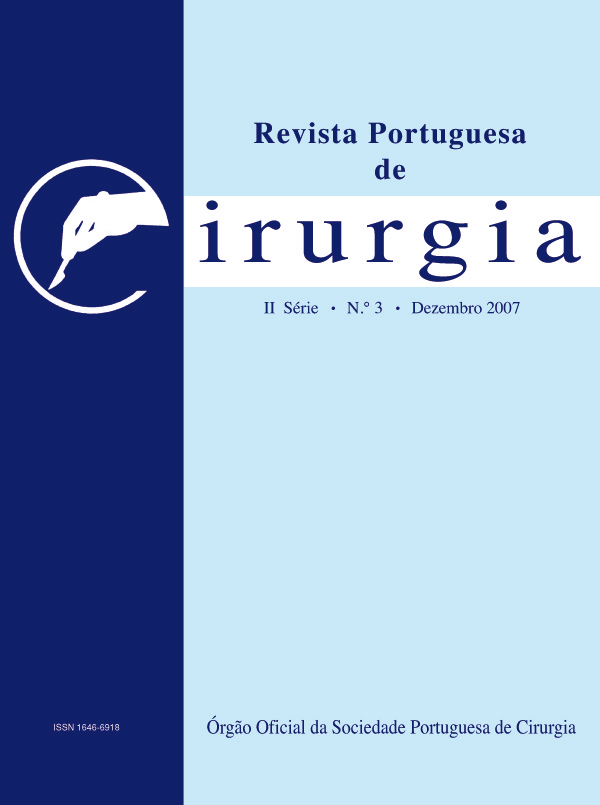Tratamento conservador das deiscências anastomóticas após bypass gástrico laparoscópico
Abstract
Background: Laparoscopic Roux-en-Y Gastric Bypass (LRYGB) is a technical demanding laparoscopic operation. Anastomotic leaks at the gastojejunostomy have been reported as a major factor in increased morbidity and mortality. Nonoperative treatment is possible only in less than half of those patients.
Methods: Retrospectively collected data from 100 LRYGB performed at our institution from July 2004 to June 2006 was analyzed. Diagnosis of anastomotic leak was established when patients presented alimentary drainage from abdominal drain and proved after ingestion of water dyed with methylene blue. GI series with oral contrast were used to establish the location of the anastomotic leak.
Results: Sevenpatientspresentedwithanastomoticleak.Allofthemhavebeendischargedfromthehospitalafewdaysearlierwith no complains. The common initial complain was alimentary drainage from the abdominal drain. All were treated nonoperative being nil per os with total parenteric nutrition and antibiotics when required. One was laparotomized because of gastrointestinal bleeding on the 4th day of nonoperative approach.
Conclusions: Anastomotic leak from gastrojejunostomy is a major complication from LRYGB. Nonoperative treatment is possible in a large number of these patients. Placement and maintenance of an abdominal drain made possible early diagnosis and is probably one of the major factors for the success of nonoperative treatment.
Downloads
Downloads
Published
Issue
Section
License
Para permitir ao editor a disseminação do trabalho do(s) autor(es) na sua máxima extensão, o(s) autor(es) deverá(ão) assinar uma Declaração de Cedência dos Direitos de Propriedade (Copyright). O acordo de transferência, (Transfer Agreement), transfere a propriedade do artigo do(s) autor(es) para a Sociedade Portuguesa de Cirurgia.
Se o artigo contiver extractos (incluindo ilustrações) de, ou for baseado no todo ou em parte em outros trabalhos com copyright (incluindo, para evitar dúvidas, material de fontes online ou de intranet), o(s) autor(es) tem(êm) de obter, dos proprietários dos respectivos copyrights, autorização escrita para reprodução desses extractos do(s) artigo(s) em todos os territórios e edições e em todos os meios de expressão e línguas. Todas os formulários de autorização devem ser fornecidos aos editores quando da entrega do artigo.



